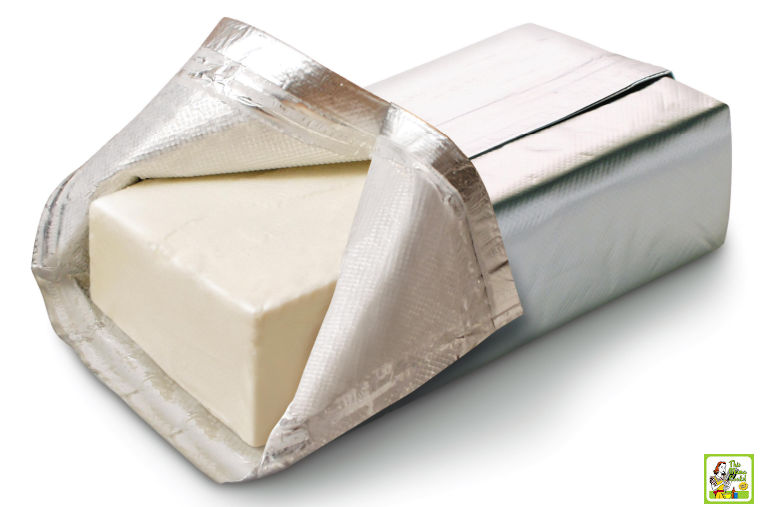Cream cheese can sit out for up to 2 hours at room temperature before it should be refrigerated. It is important to follow food safety guidelines to prevent spoilage and foodborne illness.
Cream cheese is a versatile ingredient that can be used in both sweet and savory dishes. Whether you’re making a classic cheesecake or spreading it on a bagel, cream cheese adds a creamy and tangy flavor to your recipes. However, it’s crucial to handle cream cheese properly to ensure its freshness and safety.
In this blog post, we will explore how long cream cheese can sit out at room temperature, the risks of leaving it out for too long, and best practices for storing and handling cream cheese. Let’s dive in!
The Shelf Life Of Cream Cheese
Cream cheese should not sit out for longer than two hours at room temperature. After this time, it is best to refrigerate it to maintain freshness and prevent bacterial growth. Proper storage ensures the cream cheese stays safe to eat and maintains its quality.
Factors Affecting Freshness
When it comes to cream cheese, understanding its shelf life is crucial to ensure food safety and maintain its freshness. Several factors can affect the freshness of cream cheese, including:
- Temperature: Cream cheese is a perishable dairy product and is highly sensitive to temperature. Exposure to warm temperatures can promote the growth of bacteria, leading to spoilage. Therefore, it is essential to store cream cheese in a cool environment, preferably below 40°F (4°C).
- Contamination: Cream cheese can easily become contaminated with bacteria if not handled properly. It is important to always use clean utensils and avoid cross-contamination with other foods, particularly those that are raw or have a strong odor.
- Packaging: The packaging of cream cheese plays a vital role in maintaining its freshness. Airtight containers or sealed packaging can help prevent moisture loss and protect against bacteria and other contaminants.
Expiration Dates: A Primer
Understanding expiration dates is essential when it comes to determining the freshness and safety of cream cheese. The expiration date is usually printed on the packaging and indicates the date by which the cream cheese should be consumed for optimal quality.
It is important to note that the expiration date is not an exact science and can vary depending on various factors, such as the manufacturing process and storage conditions. However, it provides a general guideline for consumers to follow.
Expired cream cheese should be discarded to avoid the risk of foodborne illnesses. Consuming expired cream cheese can lead to stomach discomfort, nausea, and even more severe symptoms in some cases.
To ensure the longest possible shelf life for cream cheese, it is recommended to store it in the refrigerator at all times, tightly sealed to prevent moisture loss and contamination. Additionally, always check the expiration date before consuming or using cream cheese in recipes.
Risks Of Improper Storage
Improperly storing cream cheese at room temperature can lead to bacterial growth and spoilage. Cream cheese should not sit out for more than two hours to prevent foodborne illnesses. It is crucial to refrigerate cream cheese promptly to maintain its freshness and quality.
Bacterial Growth Dynamics
When cream cheese is left out at room temperature, the risk of bacterial growth increases significantly. Bacteria thrive in warm, moist environments, and cream cheese provides an ideal breeding ground. In just a few hours, harmful bacteria can begin to multiply, posing a serious health risk.
Common Foodborne Illnesses
Improperly stored cream cheese can lead to common foodborne illnesses such as salmonella and Listeria. These pathogens can cause severe gastrointestinal distress, fever, and in some cases, more serious complications. It’s crucial to be aware of the risks associated with leaving cream cheese unrefrigerated.
Safe Handling Practices
Cream cheese should not sit out at room temperature for more than 2 hours to ensure safe handling practices. After this time, harmful bacteria can multiply rapidly, increasing the risk of foodborne illness. It is best to refrigerate cream cheese promptly to maintain its quality and safety.
When it comes to cream cheese, safe handling practices are crucial to prevent foodborne illnesses. Proper temperature control and cross-contamination prevention are essential aspects to consider. By following these guidelines, you can ensure the safety of your cream cheese and maintain its quality.
Temperature Control
Proper temperature control is vital to keep cream cheese safe for consumption. It is recommended to store cream cheese in the refrigerator at a temperature below 40°F (4°C). This low temperature slows down the growth of bacteria, ensuring that the cream cheese remains fresh and safe to eat.
When serving cream cheese, it should not be left at room temperature for more than two hours. Any longer than that, and harmful bacteria can multiply rapidly, increasing the risk of foodborne illness. To maintain the temperature, you can use insulated containers or ice packs when transporting cream cheese for outdoor events or picnics.
Cross-contamination Prevention
Cross-contamination is a major concern when handling cream cheese. It occurs when bacteria from one food item transfers to another, potentially leading to foodborne illnesses. To prevent cross-contamination:
- Always wash your hands thoroughly before handling cream cheese or any other food.
- Use separate utensils, such as clean knives or spoons, when scooping out cream cheese from the container to avoid introducing bacteria.
- Avoid placing cream cheese near raw meats, poultry, or seafood, as their juices can contaminate the cream cheese.
- Store cream cheese in airtight containers to prevent it from coming into contact with other foods in the refrigerator.
By following these safe handling practices, you can enjoy your cream cheese without worrying about any potential health risks. Remember, proper temperature control and cross-contamination prevention are key to maintaining the quality and safety of cream cheese.

Credit: www.thismamacooks.com
How Long Can It Safely Sit Out?
Cream cheese is a beloved ingredient in both sweet and savory dishes. However, it’s crucial to handle it with care to prevent foodborne illness. One key consideration is how long cream cheese can safely sit out at room temperature. Let’s explore the guidelines to ensure the safety of your food.
The Two-hour Rule
The two-hour rule serves as a crucial guideline for determining the safety of leaving cream cheese at room temperature. According to food safety experts, perishable foods like cream cheese should not be left out at room temperature for more than two hours. Beyond this timeframe, the risk of bacterial growth increases significantly, potentially leading to foodborne illness.
Exceptions To The Rule
While the two-hour rule is a general standard, there are some exceptions to consider. For example, if the room temperature exceeds 90°F (32°C), the safe time for leaving cream cheese out decreases to just one hour. Additionally, if the cream cheese has been sitting out for an extended period, it’s best to discard it to avoid potential health risks.
Identifying Spoilage
Identifying spoilage of cream cheese is crucial for ensuring food safety. Visual cues, odor, and texture changes can help determine if cream cheese has gone bad. Understanding these signs can prevent the consumption of spoiled cream cheese, which can lead to foodborne illnesses.
Visual Cues
Check for any visible mold growth on the surface of the cream cheese. Mold can appear as fuzzy green or blue spots. Discard the cream cheese if you notice any mold growth, as consuming mold-contaminated food can cause health issues.
Odor And Texture Changes
Sniff the cream cheese for any unusual odors. Spoiled cream cheese may emit a sour or rancid smell. Additionally, examine the texture. Unusual texture changes, such as excessive moisture or a grainy consistency, can indicate spoilage.

Credit: www.myrecipes.com
Refrigeration And Freezing Tips
Refrigeration and freezing are crucial for maintaining the quality and safety of cream cheese. Proper storage techniques play a vital role in preserving the freshness and flavor of this dairy product.
Proper Storage Techniques
- Always refrigerate cream cheese promptly after use.
- Keep cream cheese in its original packaging or an airtight container.
- Store cream cheese away from foods with strong odors to prevent flavor absorption.
The Impact On Quality
Improper storage can lead to changes in the texture and taste of cream cheese. Freezing can alter the consistency, making it grainy once thawed. Refrigeration maintains the creamy texture and flavor.
Salvaging Partially Used Cream Cheese
When it comes to salvaging partially used cream cheese, there are some storage hacks and creative usage ideas you can employ.
Storage Hacks
- Store in an airtight container to prevent drying out.
- Keep refrigerated at all times to maintain freshness.
- Label the container with the date of opening for easy tracking.
Creative Usage Ideas
- Blend with herbs to make a flavorful spread for crackers.
- Use in pasta sauces for a creamy and rich texture.
- Mix with powdered sugar for a quick and easy frosting.
:max_bytes(150000):strip_icc()/101328736_preview-700852f1e9a54b70a66fd0a8a2f8e51f.jpg)
Credit: www.allrecipes.com
Frequently Asked Questions
How Long Can Cream Cheese Sit Out At Room Temperature?
Cream cheese should not be left at room temperature for more than two hours. After that time, it becomes vulnerable to bacterial growth, which can cause foodborne illness. It is best to keep cream cheese refrigerated until ready to use.
Can You Still Eat Cream Cheese If It Has Been Left Out Overnight?
No, cream cheese should not be eaten if it has been left out overnight or for more than two hours at room temperature. Bacterial growth can occur at temperatures between 40°F and 140°F, which can lead to foodborne illness.
How Can You Tell If Cream Cheese Has Gone Bad?
If cream cheese has gone bad, it will have an off smell, a sour taste, and may have mold growing on it. It may also have a slimy texture or appear discolored. It is best to discard cream cheese if any of these signs are present.
Can You Still Use Cream Cheese After The Expiration Date?
It is not recommended to use cream cheese after the expiration date as it may have lost its freshness and could potentially cause foodborne illness. It is best to check the expiration date before using cream cheese and to discard it if it has expired.
Conclusion
After researching and analyzing the information, it is clear that cream cheese should not be left out at room temperature for more than two hours. Bacteria can grow rapidly in this type of environment, leading to potential foodborne illnesses. To ensure the safety and quality of your cream cheese, it is best to store it in the refrigerator and only leave it out for short periods of time when needed.
By following these guidelines, you can enjoy your cream cheese without any worries.







